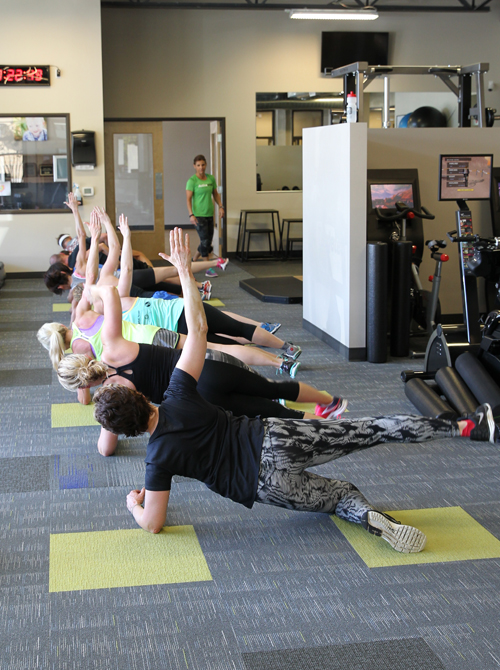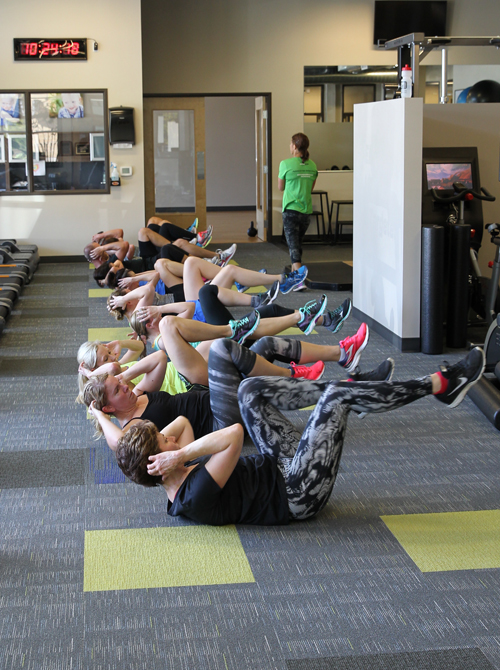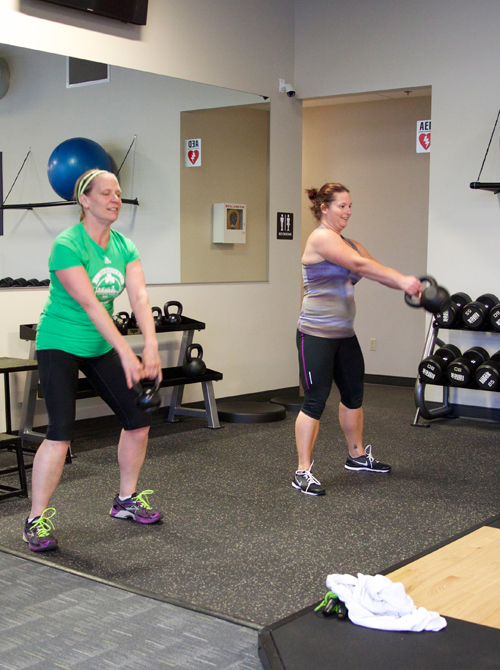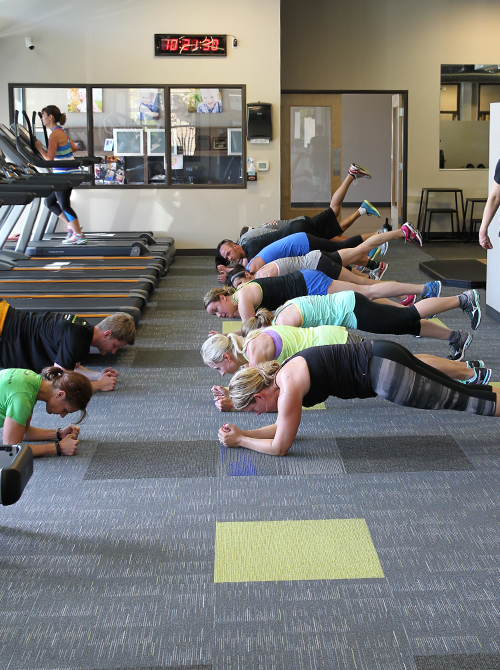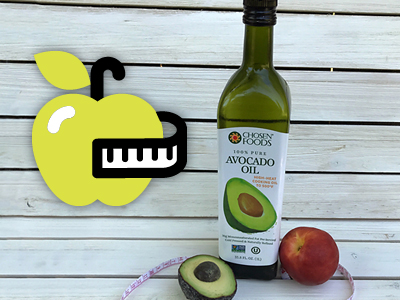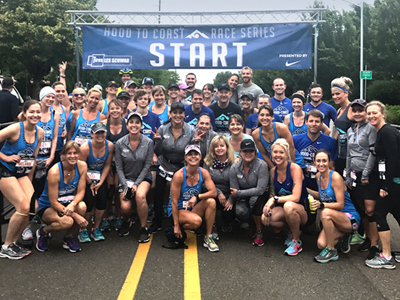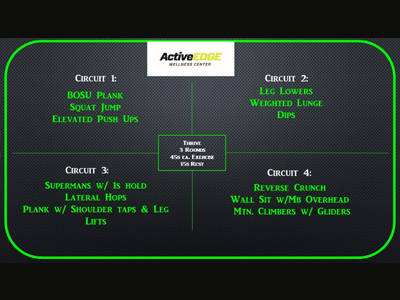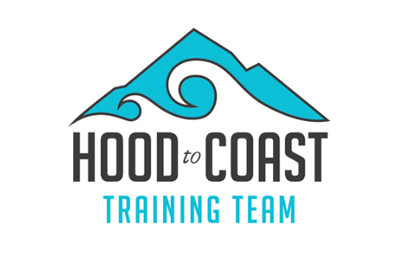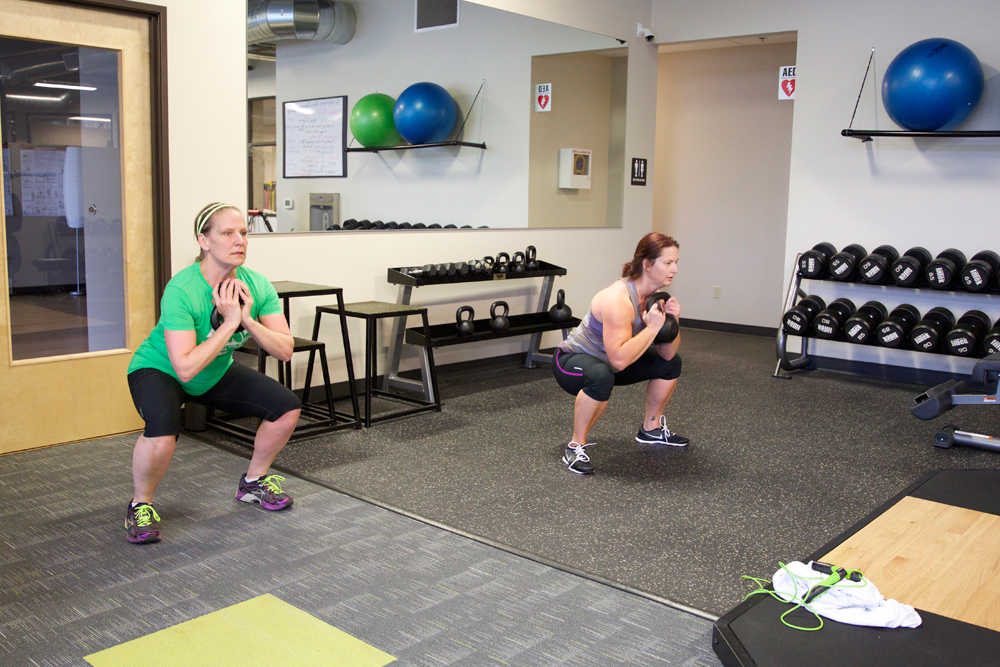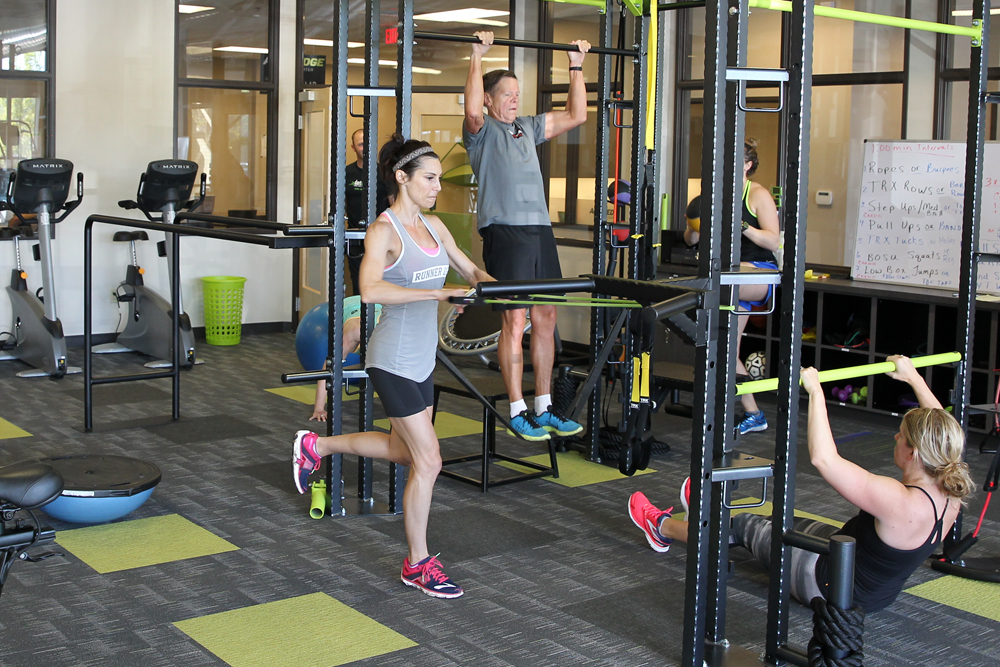SUMMER 2017
FEATURE STORY:
High Intensity Interval Training (HIIT): A Beginner’s Guide
HIIT stands for High Intensity Interval Training, but what are the specifics of the HITT method? This beginner’s guide to HIIT will provide you with general information about HIIT so that you can decide if it is right for you. We will discuss the benefits, common myths and provide some examples of how you can implement this style of workout into your current regimen.
Here are some answers to the most common questions about HITT:
What exactly is High Intensity Interval Training?
High Intensity Interval Training consists of short (45-60 seconds) bouts of high intensity exercise followed by a short active recovery period. This pattern of exercise is repeated to achieve approximately 20 minutes or more of total exercise. A common ratio used is 2:1 high intensity to low intensity (i.e. 40 seconds high intensity: 20 seconds lower intensity or active recovery).
High intensity exercise can be quite taxing on one’s body, so beginners can perform HITT workouts for a shorter overall workout duration. It takes approximately 24-48 hours of recovery from this type of training based on the magnitude of weight bearing/impact this type of exercise training has upon the body.
The great thing about the HIIT method is that it incorporates any exercise that raises an individual’s heart rate about 80% of one’s age-predicted maximum heart rate (APMHR). [(220-age) x (80%)= Desired Minimum Heart Rate for HIIT]. Please keep in mind that your heart rate is affected by many different pieces such as: one’s level of exercise experience, fitness, sleeping habits, hydration, illness, medication, etc.
Is High Intensity Interval Training for everyone, or is it just for CrossFit or high-level athletes?
HIIT can be utilized by everyone! It is based on the following two things: Effort and Heart Rate. The goal is to sustain effort at 80% or greater of one’s APMHR for 45-60 seconds, followed by a sustained effort at ~50% of one’s APMHR (age- predicted Maximum Heart rate) during the short active recovery period. Thus, anyone can participate in a HITT routine. This type of training can be done with OR without exercise equipment making it very versatile in where and how it can be done. These exercises may include sprinting, jumping, squatting, and lifting weights, body weight exercise (burpees, Mtn climbers) as well as lower intensity exercises such as riding a bike, swimming, pool running/walking, and rowing. Some simple examples of how to go between high intensity exercises and low intensity exercises include
transitioning from sprinting to walking. Other examples may be shifting from walking/riding at a high incline to walking/riding on a flat surface. If you are targeting more body weight exercises, you would do burpees for high intensity and planks for lower intensity portions. The opportunities are endless with HIIT!
How is High Intensity Interval Training beneficial for my health?
HIIT is aimed to target fat-loss and achieving one’s optimum fitness. It tests the upper limits of one’s VO2 Max (one’s ability to consume oxygen efficiently) during the entire workout. HIIT also assists one’s weight loss throughout the rest of the day, as it has been proven to help burn up to 100 extra calories/day following an ~20-minute workout. Another benefit to this type of training is that it helps build and increase muscle growth. HIIT allows you to recruit many of the major muscle groups within your body, but it has also been shown to increase the production of your body’s natural muscle building hormone HGH (human growth hormone) by 4x the normal daily output!
What are some of the precautions I can take?
An important aspect of HIIT workouts, is that they require a thorough warmup and cool down. A dynamic warmup prepares the joints, ligaments, and muscles to ensure that they are ready for high intensity movements. This could include leg swings, squats, lunges, planking, skipping, and short range of motion work. During the warmup include easy cardiovascular work such as walking, biking, or rowing to get the lungs, heart, and brain ready for a high level of effort. This same format would apply to a cool down. An individual can perform a light cardio activity to keep the blood flowing and allowing the body to facilitate proper recovery. The goal of the cool down is to increase venous return and help dissipate accumulated metabolic waste from the workout. Another vital piece of the cool down includes foam rolling and static stretching. Both give one the opportunity to release tight muscle groups and relieve soreness for the hours and days following. When do static or “holding stretches”; hold the stretches 30-45 seconds. You must exceed 20 seconds to allows the fibers to respond to the stretch. You should feel tension, but it should not be painful.
Please check with your doctor before embarking on this kind of workout routine.
Since you will be elevating your heart rate, you will want to ensure that you don’t have any preexisting conditions which may put you at risk for heart attack, stroke, or any other cardiorespiratory issues. Feel free to ask any one of our trainers to design an HITT workout specifically tailored to your needs. Our recess classes and workout board frequently will include many of the elements of a HIIT workout.


